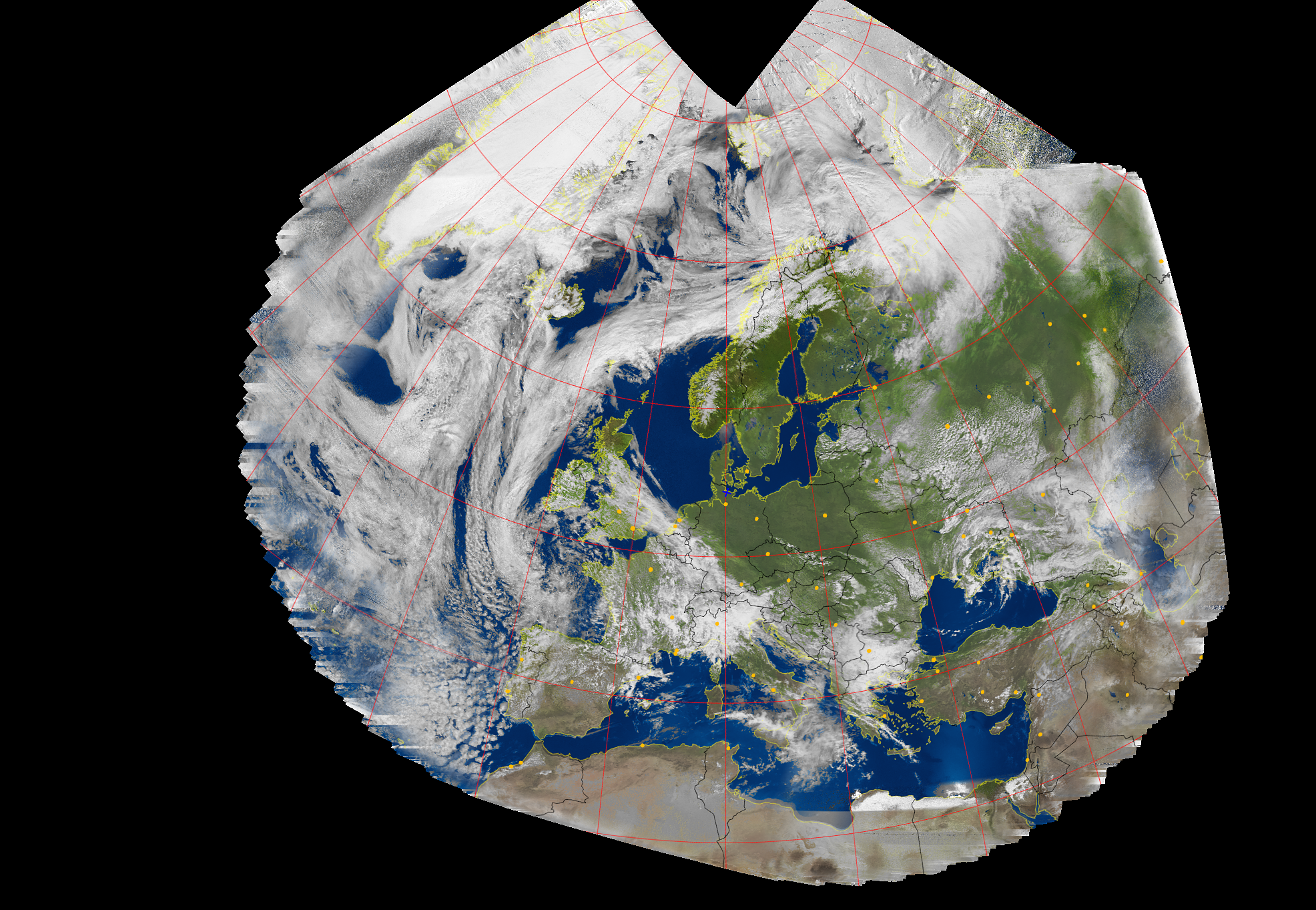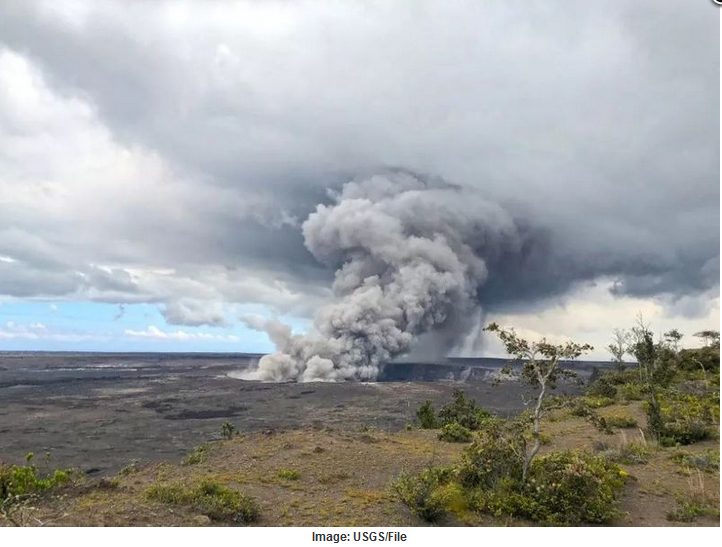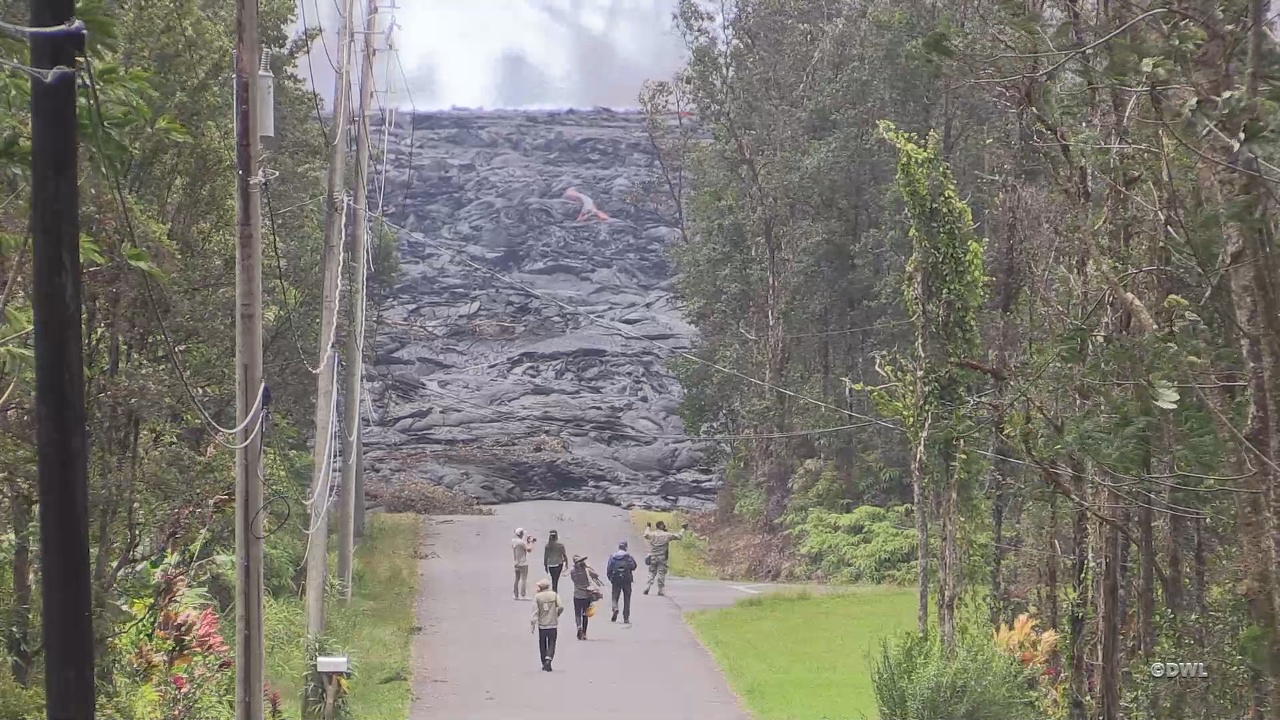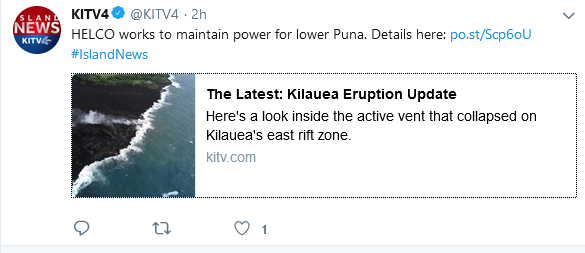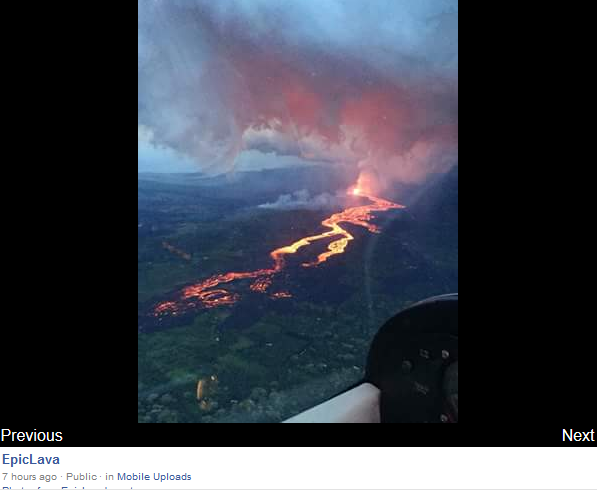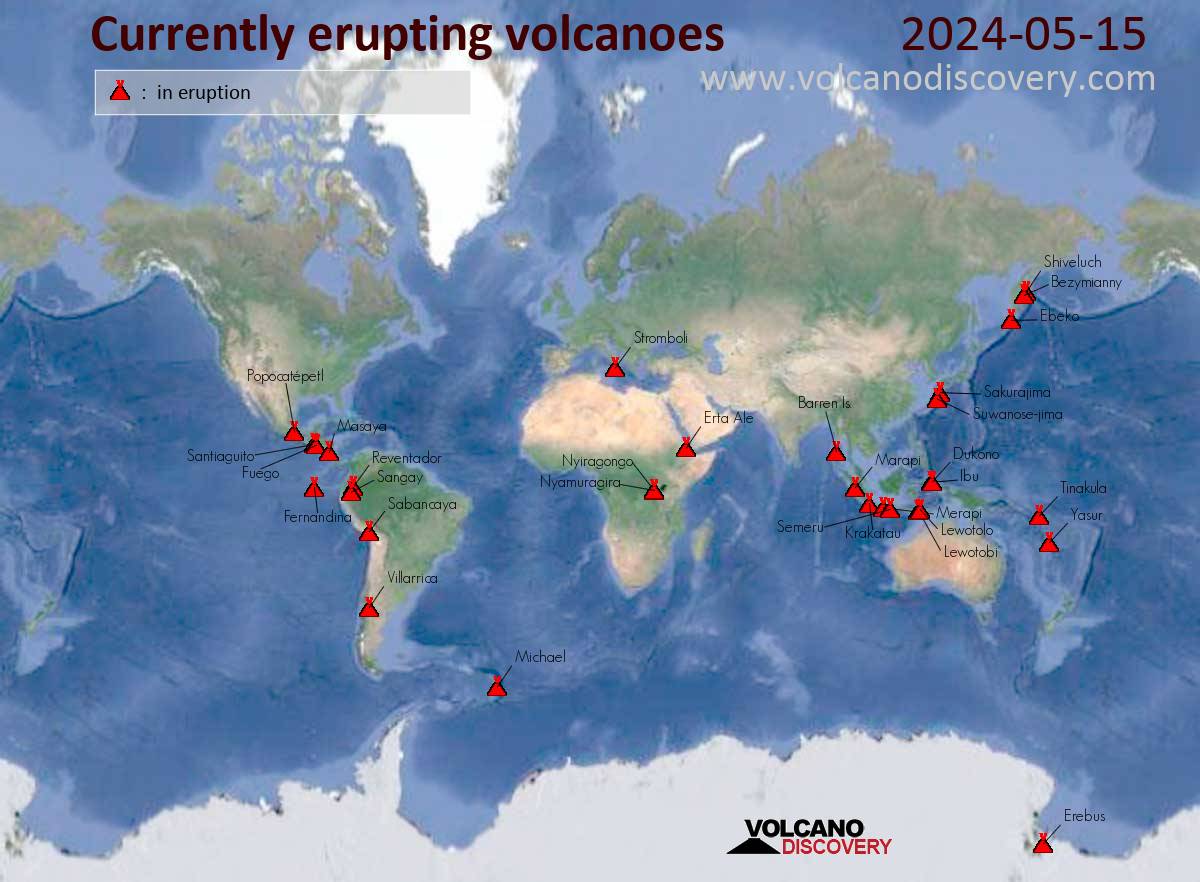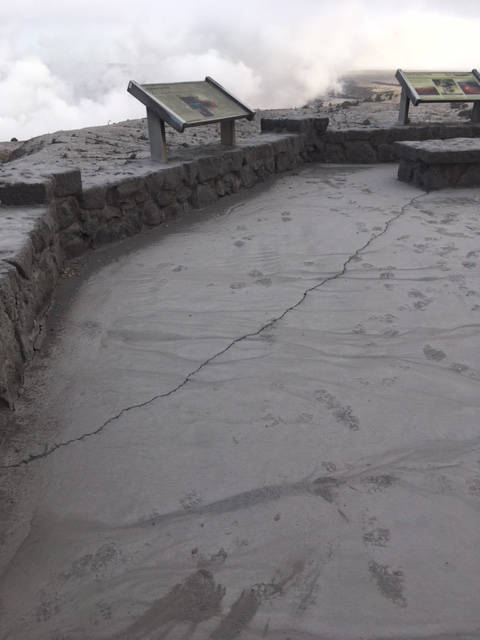https://twitter.com/bigislandnews/status/1001310071031119872
[B]Big Island Video News [/B] @[B]bigislandnews 3 hours ago [/B]
VIDEO: Hawaii Eruption Update From Civil Defense 8:51 PM - 28 May 2018
Kilauea's Halemaumau Crater grows exponentially as theory behind explosions shifts
Updated: May 28, 2018 08:12 PM HST
HAWAII NATIONAL PARK (KHON2) - Halemaumau Crater has grown exponentially, from 12 acres just a few weeks ago to more than 90 acres today.
U.S. Geological Survey Hawaiian Volcano Observatory geophysicist Jim Kauahikaua says a similar phenomenon occurred during the last explosive event back in 1924.
"The current Halemaumau was formed by explosions in 1924. Previous to the explosions, Halemaumau was half the diameter that it is today. We're seeing many aspects of 1924 over again, and one of them is the winding of the actual vent down to whatever is down there," he said.
Scientists say with no lava to provide resistance, along with dozens of earthquakes every day at the summit, the walls of the crater are caving in. All that rockfall is adding to what could become more projectiles flying back out of the crater in future explosions.
With more data comes an evolution of theory, including the idea that all these summit explosions could be fueled by gas, and not steam, as scientists originally thought.
"Our senior geologist, Don Swanson is looking at all that data. He's beginning to think that maybe the steam blast idea was not quite accurate, and that's causing him to look back at 1924, when they had far less instrumentation or analytical capabilities, and thinking 1924 wasn't a steam blast either, that it was the same mechanism, more like a gas pressurization, amd expansion, explosion. There are instrumental measurements that contradict that so as science goes on, we keep asking questions," Kauahikaua said.
Monday along saw two significant explosions. One at 4:35 a.m. sent ash roughly 10,000 feet above sea level, and another at 6:30 a.m. prompted ash to reach 12,000 feet above sea level.
"There's a lot of new magma left over from that lake in solid bits in the veneer of the walls and at the surface. So whatever we see coming out in the explosions now, if it has the look of fresh lava, we have not developed a test yet to figure out whether it's some older stuff that just got blown up by the convection of air or whatever is happening in there, or whether it's some evidence of molten lava that's solidified from below," Kauahikaua said.
High Alert: Lava from Kilauea oozes over well at geothermal plant
US Military News TV
Published on May 28, 2018
Lava from the Kilauea volcano covered at least one well Sunday at a geothermal power plant on the Big Island, according to a Hawaii County Civil Defense report. The well was successfully plugged in anticipation of the lava flow, and a second well 100 feet away has also been secured, according to the report. The plugs protect against the release of gas that could turn toxic when mixed with lava.
The lava breached the property overnight. David Mace, a spokesman for the Federal Emergency Management Agency, said the flow started about 200 yards away from the nearest well. But he said safety precautions went into effect before the breach.
"I think it's safe to say authorities have been concerned about the flow of lava onto the plant property since the eruption started," he said.
The Hawaii Civil Defense Agency said all the wells remained "stable and secure" in a statement released Sunday night. Governor David Ige told reporters that the power plant was "sufficiently safe."
Puna Geothermal, owned by Nevada's Ormat Technologies, was shut down shortly after Kilauea began spewing lava on May 3. The plant harnesses heat and steam from the Earth's core to spin turbines to generate power. A flammable gas called pentane is used as part of the process, though officials earlier this month removed 50,000 gallons of the gas from the plant to reduce the chance of explosions. They also capped the 11 wells at the property to try to prevent a breach.
Before the lava reached the well, plant spokesman Mike Kaleikini told the news agency Hawaii News Now that there was no indication of the release of the poisonous gas hydrogen sulfide - the greatest fear should lava hit the wells.
"As long as conditions are safe, we will have personnel on site," Kaleikini said. "Primary concern is sulfur dioxide from the eruption and lava coming on site. We monitor for hydrogen sulfide and sulfur dioxide on a continuous basis.
" Steve Brantley of the Hawaiian Volcano Observatory said the flow seemed to have halted Sunday morning before it picked back up and covered the well at the plant, which lies on the southeast flank of the volcano, nestled between residential neighborhoods.
Lava-filled fissures have torn apart chunks of the southeastern side of the Big Island over the past three weeks as Kilaeau has become more active.
An active fissure in the hard-hit Leilani Estates community began belching lava at a faster rate on Sunday, forcing some residents to evacuate and leaving one man briefly trapped in his home. Hawaii News Now reported that the man was eventually guided safely off his property by emergency crews
Magnitude 4.1 earthquake reported near Volcano, NO tsunami threat
Updated: May 28, 2018 06:10 PM HST
HONOLULU (KHON2) -
The Pacific Tsunami Warning Center reports the earthquake that occurred at approximately 5:39 p.m. was NOT large enough to cause a tsunami for the Island of Hawaii.
Preliminary data from the U.S. Geological Survey indicates that the earthquake measuring a magnitude of 4.1 was centered nearly five miles south of Volcano, in the Hilina region of Kilauea.
As in all earthquakes, be aware of the possibility of aftershocks.
If the earthquake was strongly felt in your area, precautionary checks should be made for any damages; especially to utility connections of gas, water and electricity.
Leilani Estates residents told to leave in light of fast-moving flow, lava fountains
Updated: May 28, 2018 06:23 PM HST Video / 21:05
Snips:
The National Weather Service reports light easterly winds are expected to push volcanic gases westward. This includes increased ash and sulfur dioxide downwind of the Kilauea summit and fissures on East Rift Zone. Leilani Estates has high levels of vog and sulfur dioxide.
***
Active fissures are feeding a fast-moving flow that borders the Leilani Estates subdivision, claiming another 10 homes. Officials won't be able to confirm exactly how many were lost until Tuesday, when the real property and housing office reopens.
***
On Friday, officials confirmed the total number of structures destroyed by lava was 82, and 41 of them were residences. Hawaii County Civil Defense administrator Talmadge Magno says 37 additional structures have been isolated, rendered inaccessible by lava flow.
***
Hawaii County officials say 24 fissures have opened in Leilani Estates since Thursday, May 3.
Click here for an interactive map.
Related Story: Puna Geothermal Venture deemed stable after lava covers two wells
Related Story: People evacuated by helicopter from neighborhood isolated by fast-moving lava
Here are some tips on what to do if your catchment system is impacted by ashfall.
Related Link: University of Hawaii’s Vog Measurement and Prediction Project
Related Story: How to protect yourself from sulfur dioxide in vog, acid rain
Earthquake activity and ground deformation continue and additional outbreaks in the general area of Leilani Estates are expected.
https://media.khon2.com/nxs-khontv-media-us-east-1/photo/2018/05/17/cracks_usgs 2_1526594124724.jpg_42881803_ver1.0_1526596498289.jpg_42884018_ver1.0_640_360.jpg
https://volcanoes.usgs.gov/observatories/hvo/multimedia_uploads/multimediaFile-2039.jpg

The Coast Guard is enforcing a Lava Entry Safety Zone for the navigable waters surrounding active lava flow entries extending 300 meters in all directions.

Last edited:

